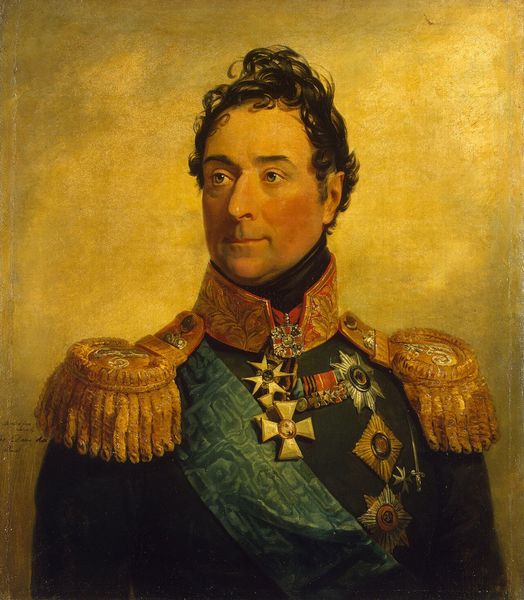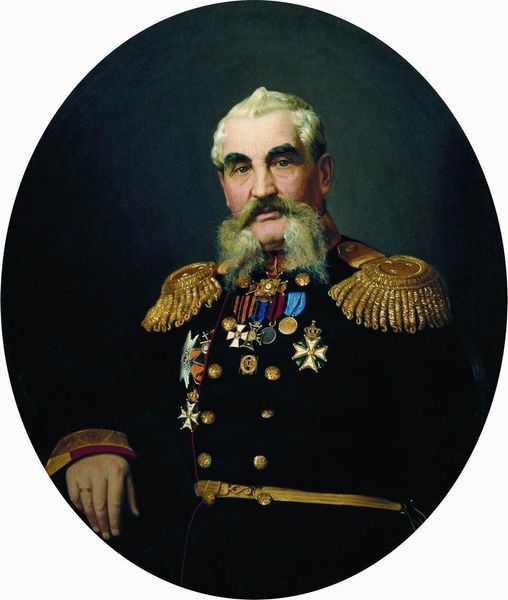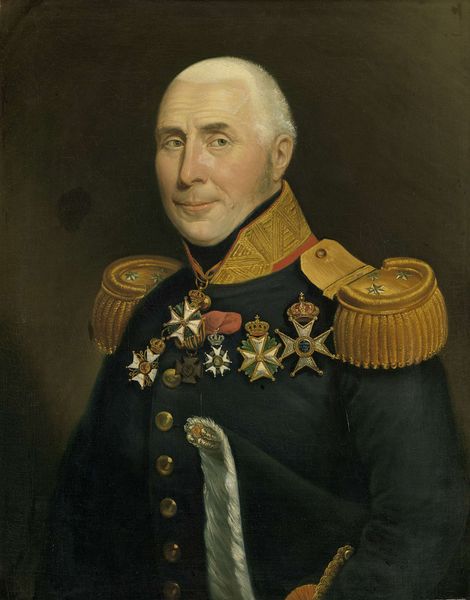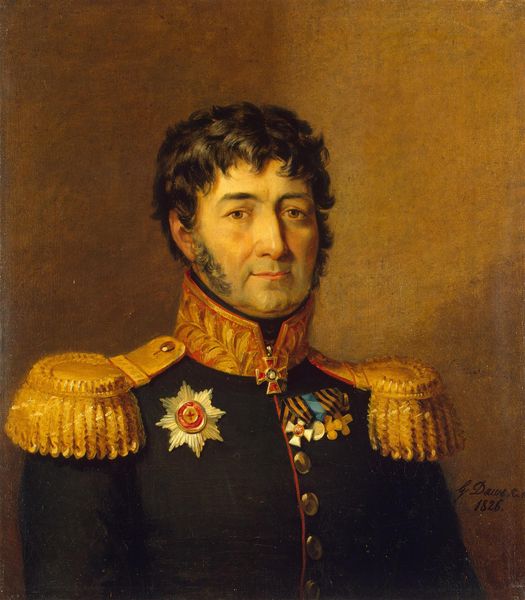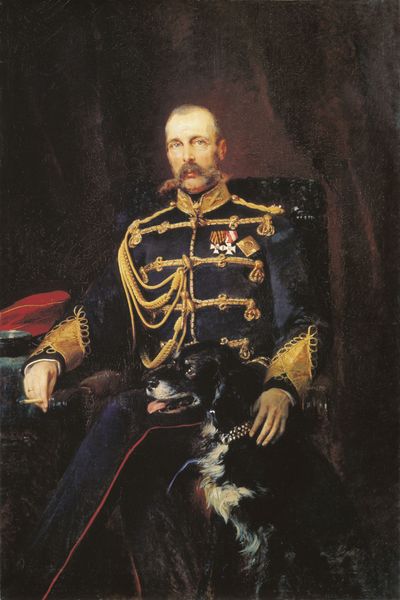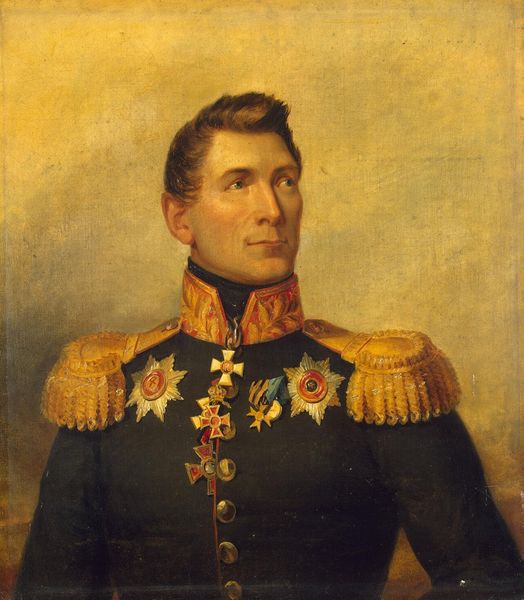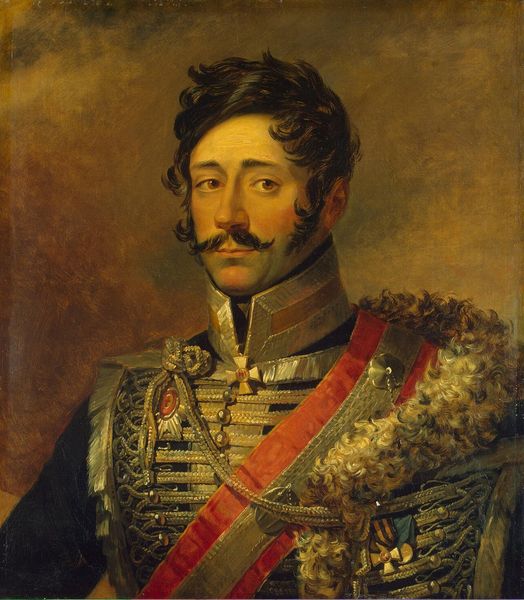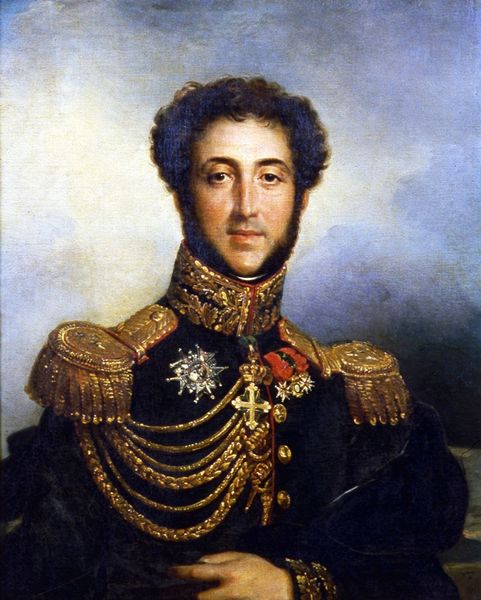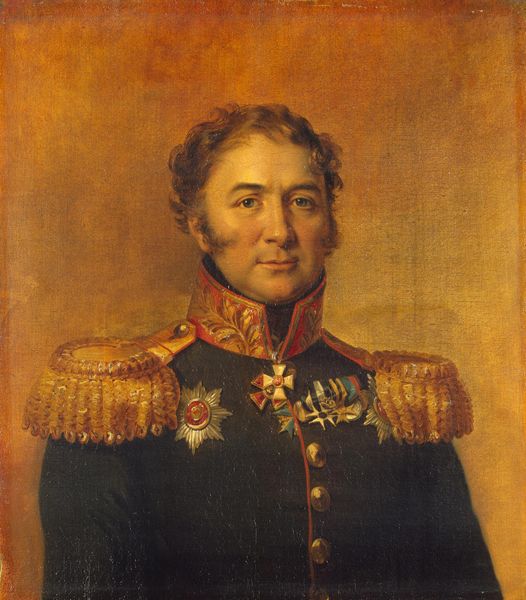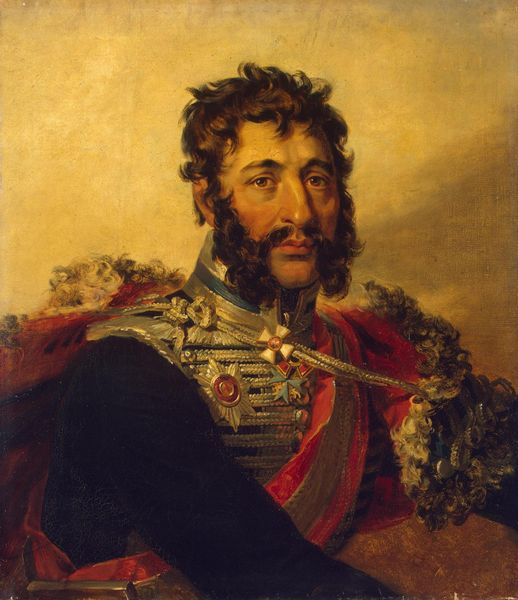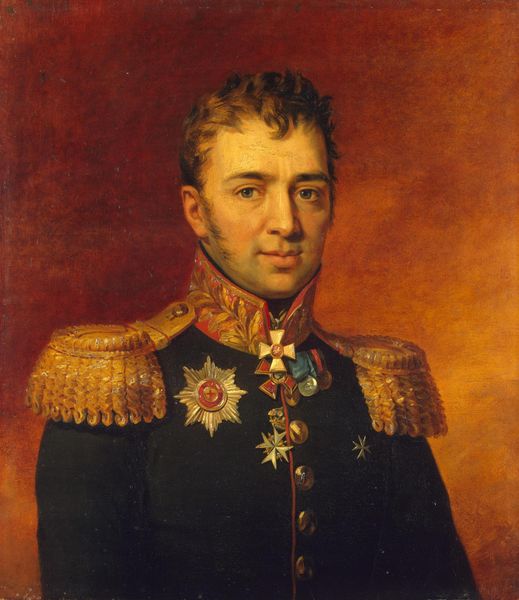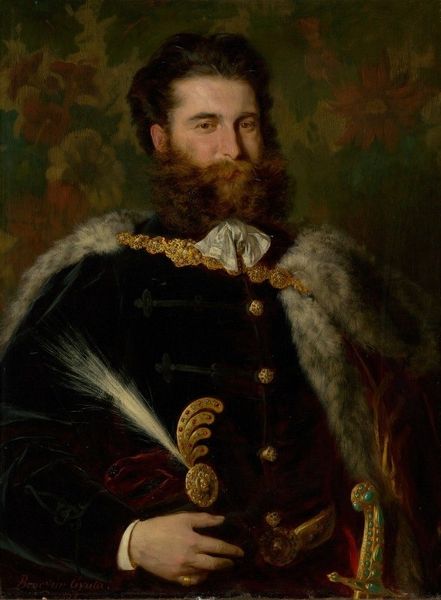
Copyright: Public domain
Editor: This is Ivan Aivazovsky’s 1888 oil painting, “Portrait of Loris-Melikov.” The weight of the medals and epaulets makes it feel quite formal and imposing. What do you see in this piece, especially considering its historical context? Curator: Absolutely. Think about Loris-Melikov. He was a key figure in Tsarist Russia during a period of intense social upheaval. The portrait, with its heavy symbolism of military honor, feels like an attempt to legitimize and perhaps even sanitize the complex reality of the man and his political actions. Consider, for example, his role in quelling dissent. Editor: So, the portrait isn’t just about him as an individual, but about the image of power he represents? Curator: Precisely. How does the artist use the visual language of power—the medals, the uniform—to construct a specific narrative? Is it a truthful representation, or is it carefully crafted propaganda designed to reinforce the Tsar's authority and silence any potential opposition to the monarchy's colonial expansion? The romanticism of the work feels like it’s masking something. Editor: That makes me think about the gaze. He's not looking directly at the viewer, almost like he’s avoiding scrutiny. Curator: Exactly! And what does it mean for Aivazovsky, primarily known for his seascapes, to paint this portrait? What could be Aivazovsky's intentions in constructing the portrait, given his Armenian heritage and his connection to a state apparatus? Editor: I hadn’t considered the layers of identity and power at play. Now, I see it’s far more than just a historical portrait. Curator: Indeed, it's about questioning whose stories are being told, and how art can either uphold or challenge dominant narratives.
Comments
No comments
Be the first to comment and join the conversation on the ultimate creative platform.
